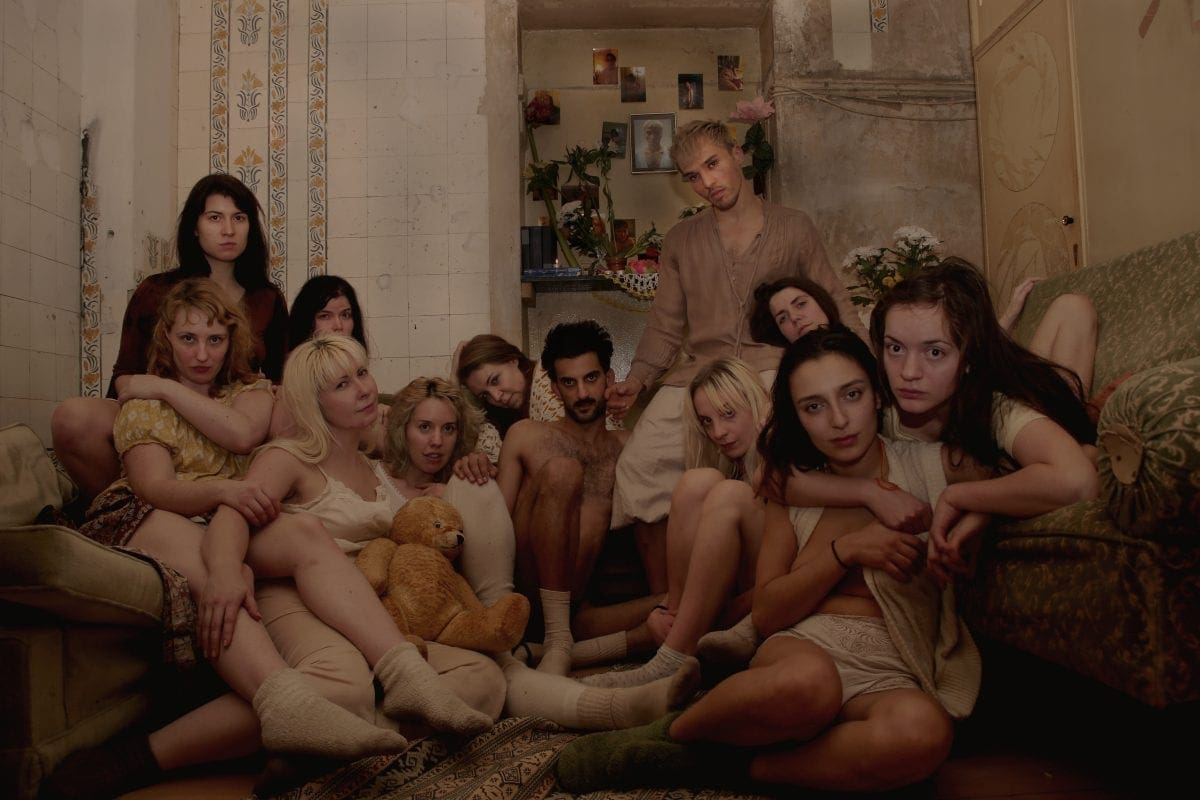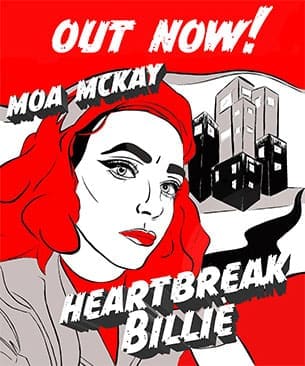In the words of queer performer Sheila Pepe: « Art exists where language fails. ».
That is why indieberlin decided to devote an article to the ability of non binary artists to create in a patriarchal society that never fails to suffocate beings and their unique, new and unconventional relationship to their gender. The six brilliant minds we had the chance to talk to revoked their birth gender and created their very own identity in order to live their existence and art in the purest way possible. Their honesty, creativity and bravery enlightened us on the possibility to create a safe and open conversation within communities, in order to minorize the importance of gender rules and fabricated ideas in our society. Discover their stories, paths and incredible artistic universes.
indieberlin would like to address a special and huge THANK YOU to all the amazing artists who took part in this article and who accepted to share their stories with us. Whoever and wherever you are, we gladly encourage you to support their art, follow them on every platform and abundantly share the resonance of their voices.
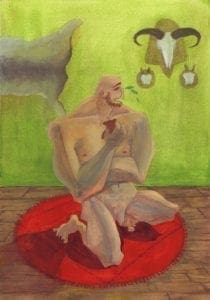 Leo, twenty-two years old
Leo, twenty-two years old
Visual artist and art student
Leo was the first artist indieberlin met for the purpose of the article and the only one with whom we had a real life encounter. All the other artists kindly took the time to answer us via email and through written answers that we happily gathered for the purpose of the article. Meeting Leo was an enlightening moment of this article’s creation process. Their maturity, openness and kindness comforted us in the idea that the article will give us the opportunity to discover talented and singular minds. And we sure did.
When did you realize you did not identify as a female or as a male and how was that process for you ?
Really defining myself as non-binary started in 2015. Because only then I got to know the word non-binary and got to know what it meant. But I can remember not identifying as female or male earlier already. When I was 13 I had a conversation with someone about not identifying as any of the two – i didn’t know more by then – genders. While having that conversation, feeling that way didn’t appear to me as something unusual. Assigned female at birth, I was severely bullied for being too loud, too rough, too active, “half a boy” by other girls, while being too much, too “emotional” , or too weird for most of the boys my age.
Being referred to as “your son” by people talking to my parents made me happy, but other girls insisting I wasn’t allowed to use the women’s restroom confused me. I liked ballet and also got in a lot of fights, just for fun. In hindsight, it’s kind of funny to me, seeing all the hints but never realizing or questioning what I actually was/am. So, I’ve known I don’t fit in these two common categories for a long time, but knowing what it meant or knowing how to give it a name and a voice took me quite some time.
« I don’t think it is the responsibility of people « outside the norm » to educate others. They can, but they don’t have to. »
At first, it was strange for me because when you learn something like that about yourself you want to make sure other people  are able to see it. I felt trapped, as if I absolutely had to look androgynous or look non-binary, to really get the message across. For one year and a half after that I went with male pronouns, only wore clothes from the men’s department, and also wore a binder. This period was particularly toxic for me because it made me afraid of anything associated with femininity. I felt as if I presented , acted or even could in any way be associated with femininity, it would invalidate my gender in some way – which is of course not the case. Even now, there is still this voice inside my head when I’m wearing nail polish or jewelry that’s telling me I’m going « against » my identity. I’m still trying to unlearn all of this. There are some educators and writers like Ericka Hart or Alok V. Menon on Instagram that helped me gain confidence and made me realize that it actually is mainly about what you feel and not about what you look like or what others think.
are able to see it. I felt trapped, as if I absolutely had to look androgynous or look non-binary, to really get the message across. For one year and a half after that I went with male pronouns, only wore clothes from the men’s department, and also wore a binder. This period was particularly toxic for me because it made me afraid of anything associated with femininity. I felt as if I presented , acted or even could in any way be associated with femininity, it would invalidate my gender in some way – which is of course not the case. Even now, there is still this voice inside my head when I’m wearing nail polish or jewelry that’s telling me I’m going « against » my identity. I’m still trying to unlearn all of this. There are some educators and writers like Ericka Hart or Alok V. Menon on Instagram that helped me gain confidence and made me realize that it actually is mainly about what you feel and not about what you look like or what others think.
What were the most important changes for you, in your personal life and artistic creation ?
Personally, it felt relieving to finally be able to put a name on my feeling that something wasn’t quite right. As soon as I came across the term non binary, it was this enlightening moment from where on I could start to accept myself and go in a direction that could make me finally feel more comfortable. Artistically, I think I started to think a lot more about what is considered to be feminine or masculine and what was and still is perceived as the standard in our society. This whole idea of how we want to see things versus how they actually is kind of stuck in my work.
 How would you describe you art and aesthetic ?
How would you describe you art and aesthetic ?
My aesthetic is rough around the edges, away from the « standard » or « usual » way of representing things I would say. I like to over exaggerate the way things look or try to depict everyday things, bring a little awareness to topics that are hardly talked about (like mental health, negative feelings, crying, insecurities), even if I do realize I myself don’t have such a huge impact. Most of the time, I try to show things from an observing perspective, from outside the situation, but still show my very personal view(s) about the topic.
My art almost always has this little moment of « daft punk » as another artist once described it – a small moment that’s unexpected, catches the eye and doesn’t quite make sense. It makes you think about it and honestly, it’s also fun to look at something and think: « What odd thing could I put here? What doesn’t really fit but still has a meaning (for me) that makes it fit into the context? ». Another ongoing topic is combining oppositional things, like showing modern or contemporary themes via old-fashioned printing techniques, like etching or lithography.
That is also why I don’t like to limit myself solely to drawing on paper and instead try to create with different media. And even if I like the thought of my art to be educating, I don’t feel it’s my duty to do so. It is not the responsibility of people „outside the norm“ to educate others. They can, but they don’t have to. This is – by the way – no statement exclusively true for art, or gender, but needs to be especially considered while engaging with the topics of racism, colonialism or sexism, but that’s a whole other story. I know I can draw whatever I want and it doesn’t have to have a deeper meaning, it doesn’t have to be political.
Regarding gender, what do you think should change in our current way of thinking and society ?
I think the most common stereotype is boys don’t wear skirts, girls have long hair, boys can’t wear makeup, basically all that stuff that tells you you’re not allowed certain things because of your gender. I think it would be good for everyone to stop thinking in these categories and stop associating certain things solely with femininity or masculinity. Our clothes, makeup or hairstyles are not inherently gendered. It’s what we learn to see them as and it would be good to un-learn this habit of putting everything in a box and judge everything based on the way we see it (especially people. You can’t know a person’s gender or sexuality just by looking at them).
For example, Billy Porter wore a lot of beautiful gowns and looks at various red carpets and a lot of cis-men and women were upset about that. We shouldn’t feel invalidated in our own gender and gender expression by what other people of our own or another gender are doing or not doing.
Bonus: Leo’s thoughts on language
What struck me as interesting is that, when speaking english I’m usually referring to non-binary humans as They/Them. While in my mother language, German, I consciously want to do the same (I usually go for “sie/ihre”, 3.person plural, or “sie/die Person”), I find it so much harder, because most of the discourse here is still held in english. I think it’s fascinating how easily you can adapt something when it’s not your mother tongue and how hard it is when you try to change something about the language you spoke from childhood.I’d love to see more people experimenting with things and pronouns and new words in Germany or in the German language. I would like it to become more flexible and open to change.
 Elena, twenty-nine years old
Elena, twenty-nine years old
Musical ritualist, critical social worker, body enthusiast, music nerd, sometimes a DJ and a neuro-divergent plutonian witch
Elena’s humorous and witty personality as well as their very unique way of producing their own music will definitely make you remember their story and artistic universe.
When did you realize you did not identify as a female or as a male and how was that process for you ?
I never resonated with the concept of gender and started to feel very frustrated when my « female socialization » kicked in at school in a very violent and crippling way. I remember dressing up in « drag », with clothes that were considered masculine, to proclaim I was a boy. I was not even sure I was a boy, it was more about rebelling against this limited idea that the world and especially mean kids and teachers seemed to have about me.
« My actual genderlessness is « invisible » to most because I am 90 percent femme presenting, and I don´t always have the desire or energy to be very explicit about it. To quote Hannah Gadsby: « I identify as tired ». »
I was also highly sensitive and neuro-divergent and had no idea about it then. Feeling a sense of belonging and being accepted was more important to me than anything, so when people were ridiculing me for my little gender-rebellion, it hurt me so much that I never dared to openly show non-conformity again until I became a very angry teenager. Later on in my social work studies, I started to be passionate about gender studies and a whole multiverse opened up for me
What were the most important changes for you, in your personal life and artistic creation ?
The most important change in my personal and artistic life was what I call my « dark night of the soul ». It happened a few years ago when I finally realized that I had made top many decisions based on fear. I was burned out, depressed, anxious and locked inside a corset of other people’s expectations. My body was full of unprocessed trauma and abuse as well as exhausted from the constant masking and pretending. I was completely disconnected from my truth.
You could literally ask me for a tissue and I would have a nervous breakdown. I called in sick at my frustrating job and wallowed in my own nutritious darkness looking for a light within for around 10 months. I learned about ADHD, autism and how often it seems to intersect with queerness. Getting peer diagnosed by people who became my friends was revolutionary to my self understanding and my way of moving through the world. I remembered magick. I discovered I would be spiritual and political at the same time and that I could be a part of a community. I found my voice, started to feel myself, meeting the right people. Eventually the data I had collected led to the conclusion that there were no other way for me to find happiness if I didn’t allow myself to be an artist.
As gender roles are very important in our society and in art and determined by prevailing cultural 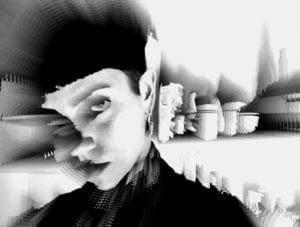 norms, do you find it harder to create art as a non-binary person ?
norms, do you find it harder to create art as a non-binary person ?
Honestly the act of creation is completely free from any sense of identity, for me it is pure and free from all that BS. When I am alone in my studio or with someone I can flow with, none of that matters.
Where I feel my external and internalized genderedness is in my insecurities or when it
comes to putting myself out there. My actual genderlessness is invisible to most because I am 90 percent « femme » presenting and I don’t always have the desire or energy to be very explicit about it. To quote Hannah Gadsby: « I identify as tired ».
How would you describe you art and aesthetic ?
I create music with my collection of unusual instruments, my voice, a loopstation and sometimes a drum machine. I record sequences with my 5 track loopstation and experiment with it. Which then turns into immersive psychedelic soundscapes. Because I work with loops, my sound is naturally of a quite mantric nature. One thing I imagine to be interesting for this gender-context is that often when I use my voice, I use effects to « ungender » my voice and make it sound alien-ish. I juggle with an ambient, dreamy, soft, deep, dark and heavy sound. I think music helps me create a sound for my moods, emotions and inner worlds, that I have no words for.
Regarding gender, what do you think should change in our current way of thinking and society ?
I wish for all beings to be liberated from the gender binary and all the overarching violence and outdated systems. I like to imagine a world in which nobody gives a damn about a newborn baby’s genitalia and where there’s just no need to fit it into any crippling identity-determination-box.
Follow Elena on Facebook and Instagram
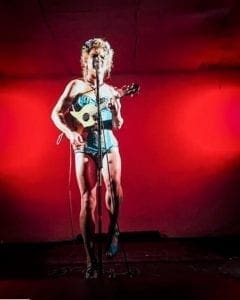 Moon
Moon
Poet and performer
Moon’s striking and unique sensibility was particularly interesting to read about and to discover. Listen to their poetry, travel in a universe of human cognizance and step out of their artistic world, alive.
When did you realize you did not identify as a female or as a male and how was that process for you ?
I lived as a man for 38 years without ever feeling right. A break up of a 6.5 year relationship with a wonderful human being prompted me to promise I would be radically honest with myself. I was unhealthily overweight and had essentially no healthy connection to my sexuality because I lived it through the confinement of masculinity and trauma.
I just knew that there were longings from within me that couldn’t be quenched within the ‘masculine’ role I had received but had neither the vocabulary nor the tools to access them. I now understand myself as a non binary femme which is to say that while I don’t see gender as a binary (more as a color space) I often present myself in a feminine way. I love feminine codes and the emotional space I associate with it. I have access to a breadth of emotional expression that I couldn’t access from masculinity. I often have to go through insults and aggressions in public and constantly have to endure being misgendered regardless of my presentation. That said, the joy I experience now is so much broader than the narrow framing that binary gender ever gave me.
It took me a long time, only in the last month or two, to claim my trans identity- I essentially gatekeeper-ed myself out of the community although I had been living and presenting as gender non conforming since may 2018. As a non binary person there are parts of the trans experience that I don’t experience such as body dysphoria, I wasn’t born into the wrong body but I was born into the wrong societal expectations of gender.
What were the most important changes for you, in your personal life and artistic creation ?
I’d reach a point where to continue authentically I would need to go places in myself that I couldn’t without accepting the truth. I took a 10 year hiatus from poetry for that very reason- the last piece I wrote in 2009 was titled: « I Remember This One Time ».
« I find it easier to no longer have to conform to society’s expectations and demands of what a person with my body « should » be doing. »
In summer 2019, I started writing again and picked up where I left off, working under the same title but spanning my new life with an honesty I’d previously been unable to access. I have also found myself able to re-appropriate other artistic disciplines more freely. Like sewing for example. I didn’t sew creatively for more that 15 years and I now find myself creative outfits for my stage persona: Gorjeoux. With this character I enjoy a specific kind of hyper feminine codes and yet I sing and speak with my natural voice. I queerify songs, mash them up, play with lyrics.I enjoy challenging and questioning normative gender where it is possible.
As gender roles are very important in our society and in art and determined by prevailing cultural norms, do you find it harder to create art as a non-binary person ?
I find it easier to no longer have to conform to society’s expectations and demands of what a person with my body « should » be doing. I am freer to move within myself and I can challenge myself and be more challenging towards others.
How would you describe you art and aesthetic ?
My art is honest and authentic. As much as possible I try to honor a core of head, heart, hands and honesty, intellect, passion, feeling, technical capability and authenticity.
I try to give the viewer and audience the chance to engage on different levels. Gorjeoux is first and foremost entertaining and fun, but if the listener concentrates on the lyrical changes I have made, they may understand deeper queer political undertones. If there is an overarching aesthetic to my work, I feel it is more an aesthetic of thought process than a concrete visual one.
Regarding gender, what do you think should change in our current way of thinking and society ?
For me what needs to change is the viewing of gender as a binary. I want to see more awareness and acceptance on the fact that the delineations we place upon gender are arbitrary and that binary is a hierarchy used to empower but also to disempower and subjugate. I would also like for people to see that freedom of gender expression is something that brings joy and while it may challenge the hierarchical binary, it raises everyone up to the same level of respect within society.
Follow Moon’s poetry account and main Instagram account and listen to her brilliant queerified covers
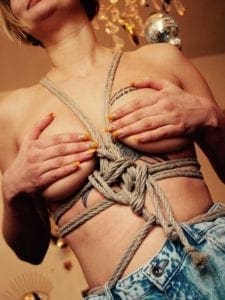 MSDF (Misère Sans Domicile Fixe), thirty-two years old
MSDF (Misère Sans Domicile Fixe), thirty-two years old
Educator, curator, DJ & care worker
MSDF’s testimony is a memorable oath for freedom. Their dedication to their artistic honorableness, the difficulties they went through and the wisdom they acquired in their spiritual and physical fights are certain to inspire you.
When did you realize you did not identify as a female or as a male and how was that process for you ?
I feel like I didn’t really care that much for most of my life and was always creating various transitions due to my restless activities, eclectic taste, millions of interests and constant annoyance of the lacking options in gender representations. However I can recall many childhood situations where I got read as a boy mainly due to my behavior. And I wasn’t exactly mad for this « mistake ». Judging from my childhood pictures I definitely always was quite obsessed with magenta pink, warm yellow and turquoise which are, funnily, the colors of the pansexual flag since 2010.
I can also vividly remember the strange mixture of joy and tears when I watched Princess Nokia’s « Tomboy » video. While watching and wondering what moved me so profoundly, I realized that this was probably the first moment that I ever felt represented on screen. Maybe I wish there would have been a term like tomboy in my childhood or anything to claim as we didn’t even have derogatory words in the peripheries of Germany that would have allowed me coming to terms with our identities. I felt in-between or outside, deviant and complex regarding many markers of identity but wouldn’t describe this as a major reason for suffering in my life.
Usually the kids I am working with are way quicker than adults in asking wether I am male or female or a witch. Being on the run, outcasted, exposed to severe violence and persecution made me a literal fugitive, unsettling and vagabonding. But my body, mind & soul, its memories, power and boldness has become a place that I can call home. Music and shibari became my sanctuary. We definitely need more spaces and ressources to show the world the immense potential and beauty that is suppressed.
What were the most important changes for you, in your personal life and artistic creation?
Mothering* my child, loosing friends due to deportations, witnessing the horrors of the war on migrants and being haunted by financial debt. I currently work 3 jobs (including a 30 hour/week job) and that profoundly limits my time to create art, rest and connect with others.
As gender roles are very important in our society and in art and determined by prevailing cultural 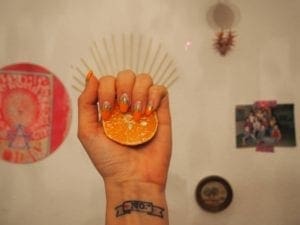 norms, do you find it harder to create art as a non-binary person?
norms, do you find it harder to create art as a non-binary person?
We definitely need more spaces, where non-binary artists get more opportunities, networking possibilities, financial and technical ressources. Sexism hinders us on every step of the way and it is way harder, especially when you criticize tokenism and refuse to help the venues and companies that practice pink-washing. For all non-binary and queer music producers out here in Berlin I want to recommend the fabulous Éclat Crew.
« I wish we could approach each other more as mysterious miracles than assume that we already know each other and ourselves. »
How would you describe you art and aesthetic ?
I like to surprise and wish to reflect and honor the many people who taught me lessons when I’m DJing, curating and writing poetry. I wish to create art that is oscillating between seriousness and joyfulness, theory and praxis. I feel most blessed when I see people being touched in a place they seemed to have lost before. When I do exhibitions, teaching and workshops it is very important for me to have interactive set ups that engage all participants to engage and center marginalized voices.
How does your sexuality influence your art?
I find solace in shibari and I wish to create safer spaces especially for other survivors of sexual violence to reimagine connection, intimacy and healing. Despite being sexpositive, poly and pansexual, I need and deeply appreciate non sexualized spaces and therefore wish to create safer rituals where we don’t have to worry about the ongoing hypersexualization, fetishization, commodification and exploitation of our bodies. As someone working in education, care and trauma intervention, I constantly look for ways to connect body, mind and soul.
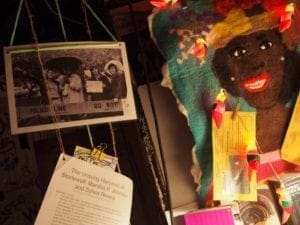 Regarding gender, what do you think should change in our current way of thinking and society?
Regarding gender, what do you think should change in our current way of thinking and society?
I wouldn’t consider myself at ease with local queer communities due to inherent misogyny, racism, white savior mentality and partial arrogance towards people outside of its bubbles. Selective solidarity and ignorance became obvious for me for instance when the self-acclaimed radical queer march called the police on BDS activists last year. I was shocked and sad, but not surprised as I believe, there is a profound difference between static scenes and fluid movements.
Barbara Santós said once that: « for social change you need a combination of desire and necessity». I feel scenes tend to lack a sense of urgency that pushes you to build coalitions with people across differences. The Refugee Resistance movement feels more relevant to me personally and I experience coalitions like the Internationalist Feminist Alliance as way more inclusive and effective. Audre Lorde once famously said: « There is no such thing as a single issue struggle, because we do not live single-issue lives ». Her words are a place of solace and consolation in this often banal, hostile world to me.
Generally critical, engaged theory and witnessing other freedom fighters has always played an important role for me to find strength and clarity. As an anarchist, I also started to love and radically embrace my ability to live and risk my life in a way that expands the dangerous corsets of likeability and intelligibility. Because deep inside me, I trust my observation and intuition that major approval, hegemonic common sense and ideas of purity are inherently dangerous and potentially genocidal to the inherent beauty and richness of life.
We should constantly consider freedom as an ongoing struggle rather than a state, remain(auto)critical and nurture our collective abilities to hope, love and heal collectively by a dehierarchization of skills, desires, knowledges etc. While I definitely understand our necessity to partially form communities around political identity, I really wish to see more solidarity and genuine openness to the other in general. Confusing solidarity with sympathy or affinity is hindering us to become fully human and forms very fragile bonds that are not powerful enough to escape the tiring, boring and murderous games of « divide and rule ». I wish we could approach each other more as mysterious miracles than assume that we already know each other and ourselves. I also wish we acknowledge our planetary entanglement and invest more energy in radical healing.
Follow MSDF on Instagram
 Jos
Jos
Director of immersive performance installations
Jos’s work is impressive and nothing like you have experienced before regarding senses, production and depth. And their personal story is just as fascinating as their artistic exploits.
When did you realize you did not identify as a female or as a male and how was that process for you ?
I have been identifying as non-binary for 7 years or so. My relationship to my gender has been changeable and non-linear for longer than that. Personally, “non-binary” is not a particularly celebratory identity, but more of an expression of my growing disillusionment with gender. I enjoy that it starts with a negation; with a step back
What were the most important changes for you, in your personal life and artistic creation ?
I think my watershed moment was when I realized that settling on an identity did not have to be permanent. That not being smoothly aligned with the gender I was assigned at birth did not mean I had to perform an identity that centered this experience in explicit and/or decipherable ways. That my identity as queer, as non-binary, as a feminist did not mean that all my artwork had to be about sex and gender. Because my subjectivity would find its way into the stories I was telling and how I was telling them anyways, inadvertently.
As gender roles are very important in our society and in art and determined by prevailing cultural  norms, do you find it harder to create art as a non-binary person ?
norms, do you find it harder to create art as a non-binary person ?
In regards to creating per se, no. In regards to being visible as non-binary in a more institutional sense, absolutely. In order to navigate funding applications, carry out PR-related tasks like interviews, panel discussions etc or even just to socialize in not-explicitly queer but rather more “general” (i.e. cis- and heteronormative) arts and culture contexts, I experience an almost aggressive insistence on binary-gendering coupled with an oppressive blind spot for anyone who falls outside of it.
I get read and treated as a femme cis woman, often straight, asked about my “actual” (vs. my chosen) name etc. While I often find it exhausting and irritating on a personal level, I am mostly interested and concerned about what it says about the state of affairs in the arts and culture institutions in Berlin.
It is a clear indication of how we really need to do better as a community, as well as how solidly embedded pink washing is in Berlin cultural institutions too, when the same people who make a big show of celebrating gender and sexuality diversity quotas in the work itself are the same ones who will effectively fail at putting it into practice at the first opportunity.
 How would you define your art and aesthetic ?
How would you define your art and aesthetic ?
I create (performance) installations that are highly curated, site-sensitive and deep-immersive environments characterized by what artist Thomas Bellinck describes as “productive pessimism”. It’s the act of passing through dystopias so as to, eventually, contemplate new utopias in response. I’m as interested in hopelessness, violence, ugliness and dystopia as I am in meaningfulness, gentleness, beauty and community, and how they are all inextricably intertwined.
How does your sexuality influence your art ?
A lot of my work is about power relations, abuse of power and the power of ritual, and it follows that gender as well as sexuality play an important part in conceptualizing my immersive environments. But the process is collaborative at the core, and so it becomes less and less about “my sexuality” in particular, and rather about the diversity and multiplicity of narratives and experiences brought by the performers who inhabit these worlds I build, alongside those of the audience we welcome into them.
Regarding gender, what do you think should change in our current way of thinking and society ?
Allow complexities of gender, no matter how striking, how subtle, how loud, how quiet, how public, how private, how hesitant, how confident the are. Be kind, and understand that gender does not exist in isolation from other privileges (or lack of), don’t be afraid to try and fail and try again and fail better.
Photos by Laura Jung, installation by Jos Porath
 Teo, thirty-six years old
Teo, thirty-six years old
Performer, dancer and audio-visual designer
We hope you will be as moved and amazed as we were reading about Teo’s rocambolesque and inspiring path to acceptance and artistic maturity.
When did you realize you did not identify as a female or as a male and how was that process for you ?
Born in a female body, I have been confused since my early childhood as all my interests were related to activities which were meant for boys (incl. Sports, toys, games, clothes…) and when I was hanging out with girls I would feel uncomfortable and misplaced. I grew up in communist Romania with a very conservative father, all my life I’ve tried to fit in. As time passed, I was more and more conscious that I liked dressing up and behaving like a boy but I always came back accepting my identity as a girl as I had no other option.
In my teen years I started noticing I wasn’t fitting on either of the genders, I didn’t understand girls and boys always treated me like one which felt very strange frustrating. Later on, when sexuality became more prominent, I couldn’t find any pleasure being with men, despite trying it for infinite times. I then became a lesbian. My attempts to normalize myself always ended up in outbreaks which finally led me to leave the country and start looking for my true self.
Edinburgh was my first home in which I found freedom, new perspectives of feminism, homosexuality and queerness. However I still felt misplaced behind a gay woman, it didn’t feel right. I moved to Berlin in 2011 and opened up my perspectives through encounters with a great variety of genre-diverse people, I got caught by the idea of being non-binary.
« Nowadays it seems like there is a trend to give more space to queer artists in institutionalized spaces. To me it feels somewhat exploitative. »
It was the most fitting definition I had found so far and i felt content in my identity. Until I wen through a series of  psychosomatic events that triggered me in a way that I was missing my masculine self. That’s how I discovered transness. Since then I’ve been busy digesting my past and looking for clues (which exist in abundance) that can confirm my feeling of being a man born in a female body. Dysphoria and depression have been my best friends throughout all this time. I started addressing myself as He and it for sure felt more fitting than She.
psychosomatic events that triggered me in a way that I was missing my masculine self. That’s how I discovered transness. Since then I’ve been busy digesting my past and looking for clues (which exist in abundance) that can confirm my feeling of being a man born in a female body. Dysphoria and depression have been my best friends throughout all this time. I started addressing myself as He and it for sure felt more fitting than She.
But society makes it very hard for people to be completely gender fluid. Once a therapist told me: « Come back to me when you know if you want to be a man or a woman ». So I define myself as ‘inBEtween’ (which can be translated as a being inside of twins).
What were the most important changes for you, in your personal life and artistic creation ?
The biggest changes were leaving home on a personal level, not having the limitations of my family’s perspective was a true liberation, and marked the beginning of my self discovery process. It’s also when I decided to study Arts, which is a choice that influenced my life and artistic career.
As gender roles are very important in our society and in art and determined by prevailing cultural norms, do you find it harder to create art as a non-binary person ?
I don’t find creating necessary hard, as my creation space and environment is mine. It’s more about where to go with your creation, in my case dance and performance is sometimes tricky as the formats and frames often don’t know where to place me. It is easier in queer scenes and circles, but it also limits you to only address a queer audience.Nowadays it seems like there is a trend to give more space to queer artists in institutionalized spaces. To me it feels somewhat exploitative.
As a dancer I often realize that most auditions would not possible for me as I neither would go through as a male dancer or as a female dancer. As an actor I also find it hard to get opportunities if it is somehow not a queer story. But the job in which I felt the more oppressed by norms was when I was a technician in a theatre. It’s a very hardcore space for women and queer people.
 How would you describe you art and aesthetic ?
How would you describe you art and aesthetic ?
I try to find the most unique and authentic form to put my inner untold stories in a poetic form by
designing multidimensional experiences. My aesthetic is a collage of perspectives, constantly in TRANSformation.
How does your sexuality influence your art ?
That is a good question. I like to work with female directors. I guess its a glitch from my lifelong affinity for women. I don’t think my sexuality helps me on stage or in my work, I work more with or about my gender.
Regarding gender, what do you think should change in our current way of thinking and society ?
Difficult to say, it sometimes feel like we need to start from the beginning. From the moment we are born we are brainwashed with male or female stereotypes. What would we identify to if we didn’t know anything about male and female ? I would like to completely forget about gender actually.
Follow Teo on Instagram
Once again, thank you to the artists who all candidly answered our questions with an open heart that is, now more than ever, beating to the sound of change and acceptance. What binds these artists and personas together is one common virtue amid this pivotal period for queer culture: where humans create differences and distance, art fills the void.
Make sure to admire, share, talk about and support their work.
Presentation photo by Laura Jung and Jos Porath from their ‘Returning Home’ installation.

